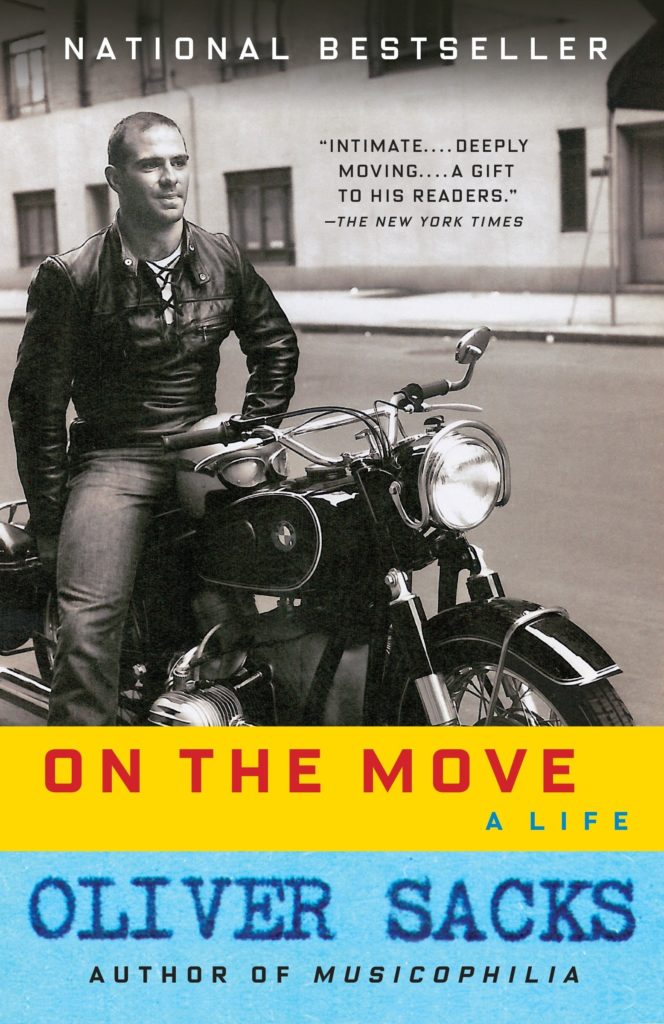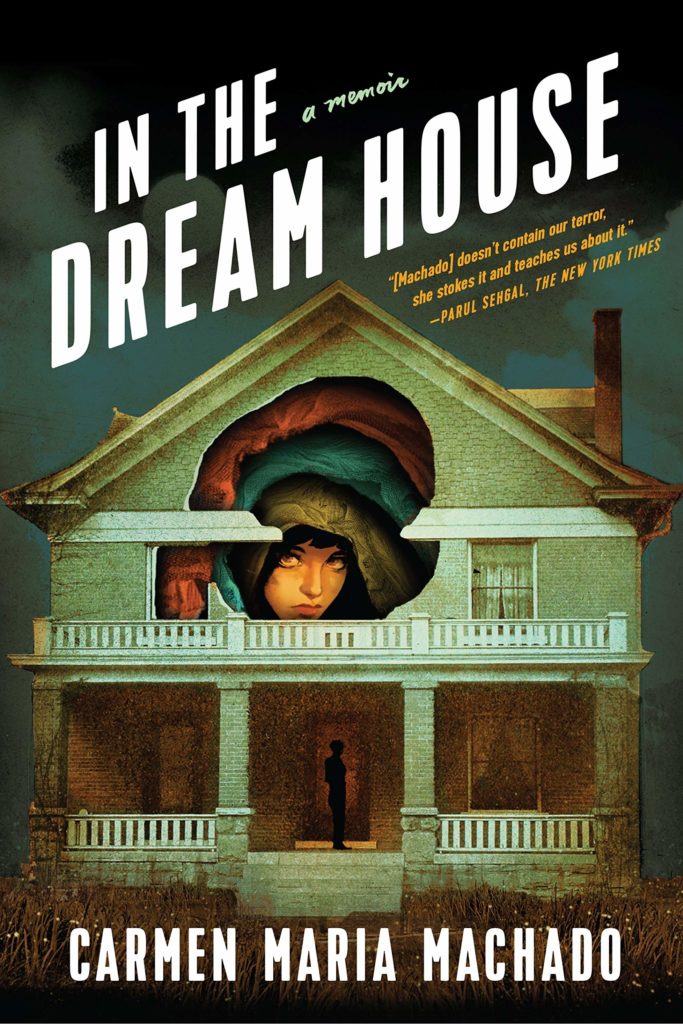so, as is our consecrate duty as a literary and culture website—though with full awareness of the potentially bootless and interminably contestable nature of the task—in the come weeks, we ’ ll be taking a look at the best and most important ( these being not always the same ) books of the ten that was. We will do this, of class, by means of a diverseness of lists. We began with the best debut novels, the best short circuit story collections, and the best poetry collections of the decade, and we have now reached the fourth list in our series : the best memoirs published in English between 2010 and 2019 ( not for nothing : 2015 was a very full class for memoir ) .
The follow books were chosen after much argue ( and several rounds of voting ) by the Literary Hub staff. Tears were spilled, feelings were hurt, books were re-read. And as you ’ ll soon see, we had a hard time choosing just ten—so we ’ ve besides included a list of dissenting opinions, and an even longer number of also-rans. As ever, free to add any of your own favorites that we ’ ve missed in the comments below.
Reading: The 10 Best Memoirs of the Decade
***
The Top Ten
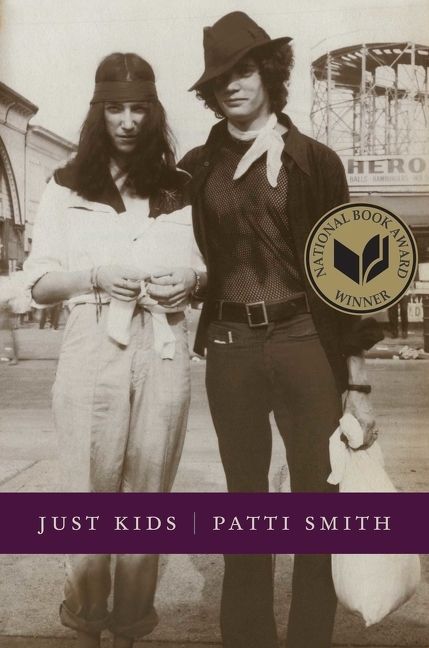 Patti Smith, Just Kids (2010)
Patti Smith, Just Kids (2010)
In 1967, 20-year old aspirant poet Patti Smith moved to New York City, where she expected to make ends meet by working as a waitress, got a subcontract rather at a bookshop, met budding artist Robert Mapplethorpe, and embarked with him upon the kind of bohemian late-twentieth hundred life that defined downtown during the city ’ s survive great period of artistic foment. More than fifty years late, with CBGBs now a shoe store and Velvet Underground t-shirts available in toddler sizes, the counter-culture has become the acculturation, and it ’ mho near impossible to differentiate the baby-boom mythology from fact. Those wishing to know how it was, though—or at least how it felt—can do no better than turning to Smith ’ randomness 2010 National Book Award-winning memoir, Just Kids, a masterpiece of social observation and self-scrutiny, exhilaratingly alert with what it is to be young and to love person and to want things. The book flows through the city in all its energy and sordidness, from mornings at the Chelsea Hotel to nights at Max ’ s Kansas City, until, one by one, Smith and Mapplethorpe get celebrated. passim, she is good company, by turns calculating chronicler of the hard work that goes into building an artist ’ south career and disbelieving observer of her own success. Plus she ’ s an excellent, much hilarious portraitist, with a apparently endless add of captivating subjects, from Burroughs to Warhol, to Mapplethorpe, whom she is interminably tender about and loyal to and infatuated with, and whose passing elicits one of the most raw-nerve eulogies you ’ re always likely to read. Most importantly, Smith is possessed of that quality that sets apart the truly great work of autobiography from the merely estimable : she knows herself. –Emily Firetog, Deputy Editor
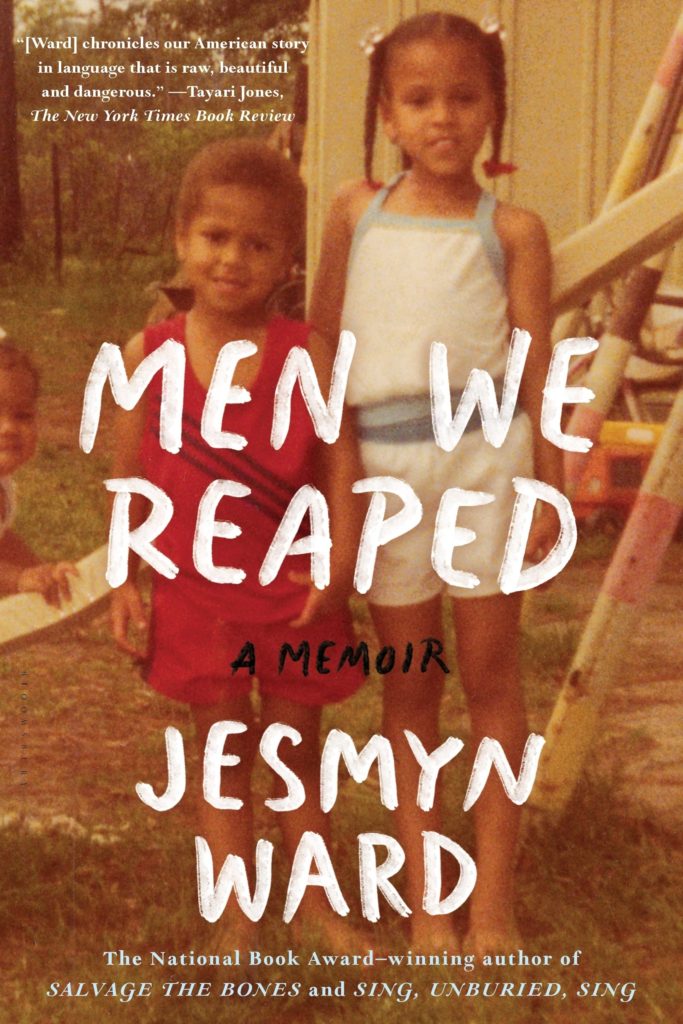 Jesmyn Ward, Men We Reaped (2013)
Jesmyn Ward, Men We Reaped (2013)
Most readers of contemporary american fiction know Jesmyn Ward ( the prodigiously talented McArthur Genius Fellowship-winning Mississippi writer who, at barely forty years old, became the foremost womanhood to win two National Book Awards for Fiction ) for salvage the Bones ( 2011 ) and Sing, Unburied, Sing ( 2017 ) —a couple of haunted, lyric novels, subtly infused with the mythic, which examined southerly black communities ravaged by impossible calamity and generational injury. Her harrow 2013 memoir, Men We Reaped—in which Ward considers the previous deaths, over just four years, of five men in her life sentence ( including her beloved brother ), a well as the atrocious risks built-in in merely trying to just live as a young black man in the rural south—deserves to stand right alongside these brilliant novels. Ward is drawing from a deeply and shimmering well of sorrow here, describing with exquisite tenderness the lives these doomed men lived—who they were, the people they aspired to become, and what they meant to their families and friends—before poverty and the erode nature of systemic racism wore away at their defenses and left them vulnerable. Having navigated a childhood of familial instability and extreme fiscal asperity, Ward became the first member of her class to attend college, leaving behind a community that was full of both nourishing sexual love and wearying strife, and some of the most grievous spell in Men We Reaped juxtaposes her warm memories of joyful Mississippi nights back home with the intense feel of survivor ’ mho guilt that washes over her in the aftermath of these severe losses. –Dan Sheehan, Book Marks Editor
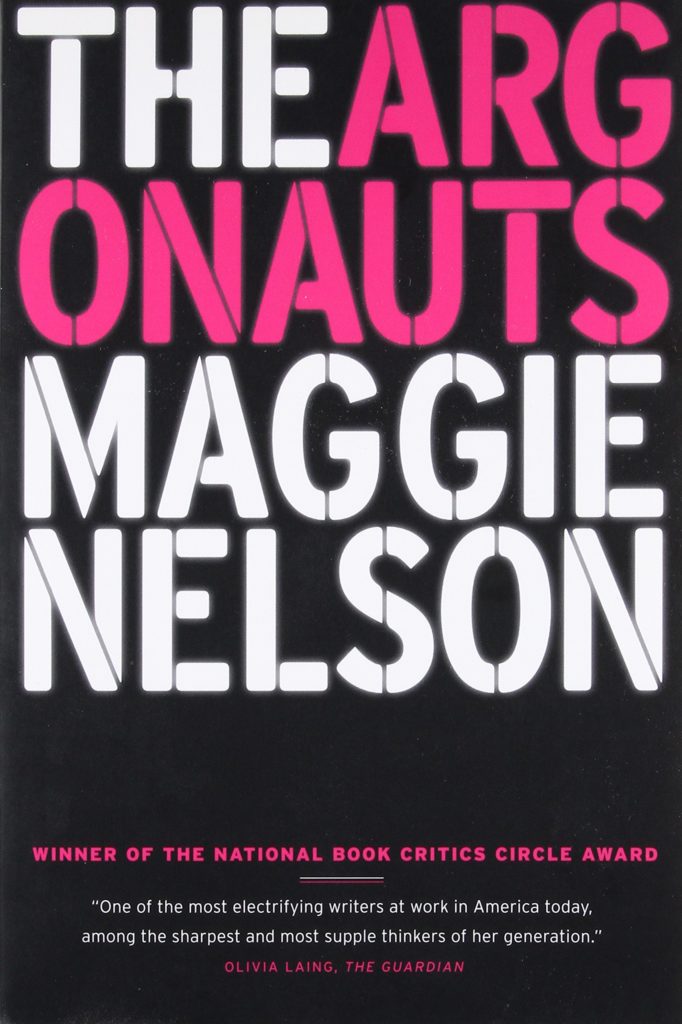 Maggie Nelson, The Argonauts (2015)
Maggie Nelson, The Argonauts (2015)
creative nonfiction already redefines, for many readers and writers alike, what nonfiction can do ; as nonfiction that uses the mechanical techniques of fiction, it allows us to create expansive, experimental write that may look, at a glance, about identical from a short history, novel, or lyric prose poem. Maggie Nelson ’ s The Argonauts takes this to heart. It is a beautiful, astonishing memoir—a firearm of “ autotheory, ” actually, meaning a influence that applies literary and philosophical theory to the writer ’ s own life—that reimagines what a memoir can look like. Told non-linearly in sharp fragments, it explores desire, what it means to be commonwealth of independent states or trans, the limits of the gender binary itself for people who are non-binary, male chauvinist and heteronormative expectations, and what it means to exist as a charwoman in the world broadly—and it does all this in one of the most devastatingly gorgeous bits of prose I ’ ve seen in a while. Its exploration of curious desire is poignant and brawny. The Argonauts pushes creative nonfiction to its limits, and I can ’ thymine recommend it enough as an model of how some memoirs—particularly ones like these—can only be written out of order, because that, in world, is just the right order for it. –Gabrielle Bellott, Lit Hub staff writer
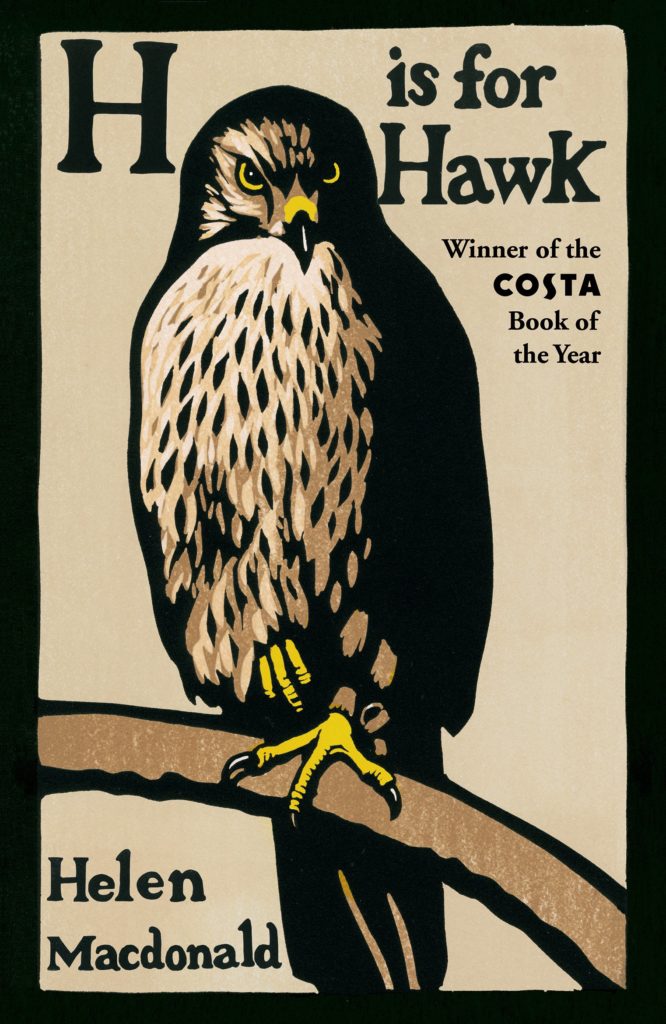 Helen Macdonald, H is For Hawk (2015)
Helen Macdonald, H is For Hawk (2015)
Helen Macdonald ’ second H is for Hawk was, to say the least, a surprise phenomenon in America. An erudite, lyric, very british memoir that describes the coincident bereaved of a beloved parent, the lamentation of a particular version of the English countryside, and the undertake to cohabitate with a ferocious bird of prey ? not what most publishers would consider a license to print money ; add to that the embedded repeat of T.H. White ’ mho own profoundly trouble report of biography with a fractious goshawk and “ best seller ” seems improbable at best. And though a reserve ’ randomness sales should factor reasonably broken ( if at all ) when considering its worthiness, one is tempted to make an exception for memoir, the genre that most wants to be read .
But it is neither the familiarity of the circumstances ( they are decidedly not ) nor the plainness of the linguistic process ( this is the memoir of a poet ! ) that makes Macdonald ’ s memoir indeed universally accessible—it is the persistent honesty of a writer grappling on the page with the hard stuff most of us reserve for 4am : the finality of end, the paralysis of diffidence, the loss of the natural world, and… the winged stamp out machine ambush in the early board. That Macdonald manages literary biography, pastoral meditation, grief diary, and falconry how-to all in one book is a on-key marvel, and will remain so as this closely perfect memoir takes its true place in the canon. –Jonny Diamond, Lit Hub Editor-in-Chief
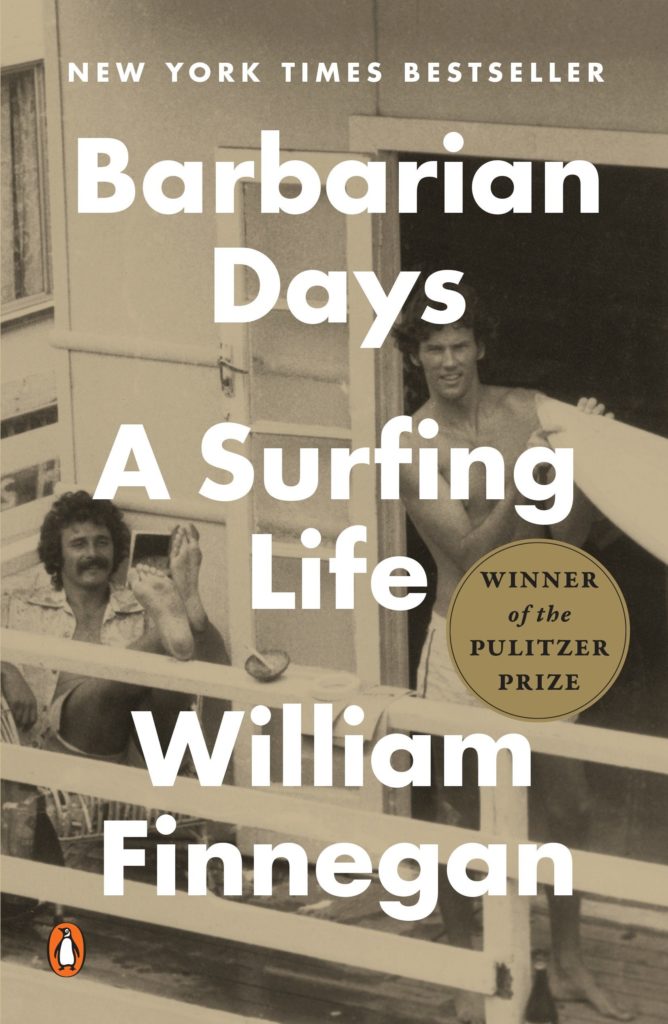 William Finnegan, Barbarian Days (2015)
William Finnegan, Barbarian Days (2015)
“ They were silhouettes, backlit by gloomy sun, and they danced mutely through the glower, their boards like bad dark blades, slashing and gliding, fleet beneath their feet. ” not the type of lyric we ’ ve come to associate with sporting memoirs, but as anyone who has picked up this extraordinary work—which Alice Gregory, writing in the New York Review of Books, astutely described as “ an absolutely convert study in the joy of treating badly an unserious thing ” —will attest, this is no ordinary sport memoir. New Yorker staff writer William Finnegan has lived an ardent and aristotelian liveliness that would be the envy of evening the most season vagabond reporter. For over forty years he has been roaming the earth ’ mho out reaches, chronicling everything from journalists in Apartheid South Africa to youth poverty in the United States, from drug cartels in Mexico to billionaire mining tycoons in Australia. Throughout it all, though, his great love, his compulsion, his jesus and chew over, his sin and his soul and his North asterisk, has been that most solitary confinement and mystic of pastimes : surfing. peasant Days is Finnegan ’ s ode to a life spent slaying liquid dragons, meeting bodacious kindred spirits, and finding contentment inside the tubes of some of the most amazing waves on the face of the earth. Finnegan is a brilliant, humane writer, as ace at conjuring thirty-year-old swells and breaks from memory as he is at describing the unique, and much offer, bonds that are forged between dreamy acolytes of the ocean. With savage Days, he has given us a truly moving and profound meditation on an elemental being. –Dan Sheehan, Book Marks Editor
 Margo Jefferson, Negroland (2015)
Margo Jefferson, Negroland (2015)
The title of Margo Jefferson ’ mho Negroland, her memoir of growing up in Chicago in the 1950s and 60s, is her nickname for the space in which she grew up : not barely a physical location, but a state of mind. “ Negroland ” is, in Jefferson ’ sulfur words, her “ diagnose for a little region of Negro America where residents were sheltered by a certain sum of privilege and plenty. ” Jefferson ’ s father was a outstanding doctor, and her beget was a socialite. She grew up as a extremity of the black upper-middle-class—experiencing greater wealth and better education, and living a life of greater polish than most of the white people she encountered while besides immersed in a culture that insisted on exceptionalism among the national black community. “ Children in Negroland, ” she writes, “ were warned that few Negroes enjoyed privilege or enough and that most whites would be glad to see them returned to indigence, deference and subservience. Children there were taught that most other Negroes ought to be emulating us when excessively many of them ( out of envy or ignorance ) went on act in ways that encouraged racial prejudice. ”
Jefferson ’ second mission, in this brilliant account, is to unfurl all the different, irritating, awkward, damaging, and sometimes quasi-empowering components of this highly complicated mass mentality, angstrom well unpack the cultural forces that begat this specific crystallization. Besides that Jefferson ’ s reflections are so movingly written, her book distinctly fulfills a critical want : then rarely do scholars approach issues of raceway and course simultaneously to such productive ends. Jefferson ’ mho memoir is utilitarian in expressing that the black have in America is not unilaterally one of inequality and persecution—but that these are components of a larger, varied, more nuanced national identity which besides incorporates excellence, accomplishment, and condition. Negroland additionally offers substantive considerations about how oppression manifests within specific groups and grows as forms of self-love and hate. It is besides about designation and alienation : who do you identify with, Jefferson asks herself, and why ? –Olivia Rutigliano, CrimeReads Editorial Fellow
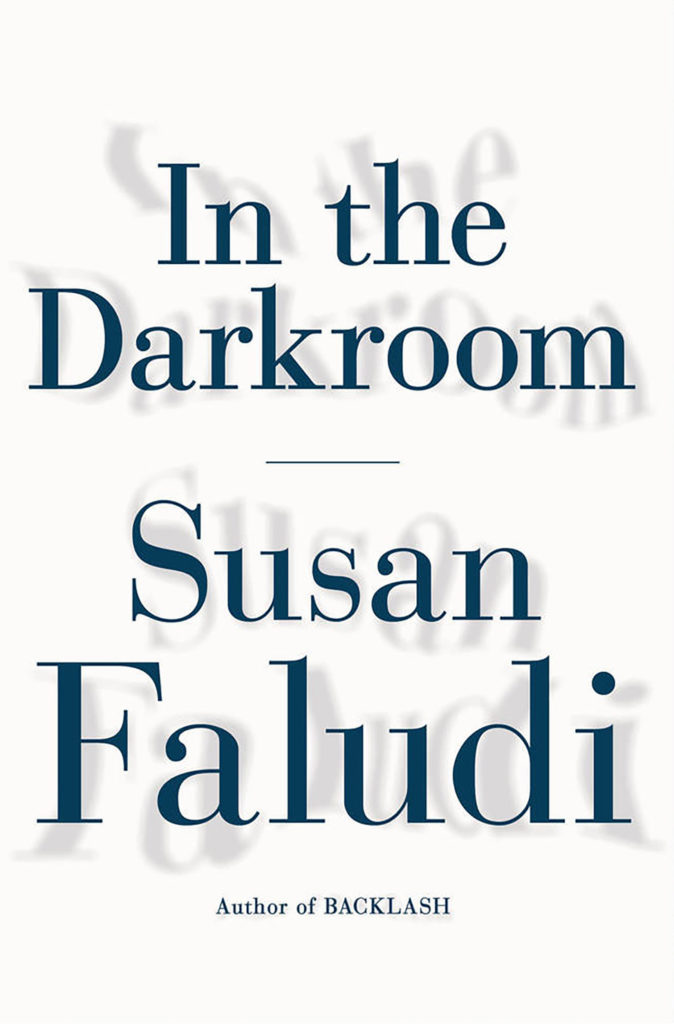 Susan Faludi, In the Darkroom (2016)
Susan Faludi, In the Darkroom (2016)
I borrowed this one from knead, and, afraid of doing damage to its white bind, I bought a fabric cover, in the first place no doubt intended for bibles, to protect the book from smudges or anything else indecent. That covering became symbolic as I dived into this memoir of shroud, transformation, and reversals. In the Darkroom follows feminist learner Susan Faludi as she reunites with her estrange father, who is now living as a woman in the Budapest of her youth. Her father survived the Holocaust through disguises and subterfuge, then found safety after the war in depictions of women on film ; she is gallant to show her daughter the life she has made in Budapest, even as right wing nationalism grows around her. Susan Faludi honestly discusses her fight to accept her don, both in her alienation and in her newfangled biography as womanhood, and reading the memoir of an honest-to-god school feminist design out how to be trans-inclusive is one of the most heartwarming things you ’ ll ever come across .
The book besides serves as a snapshot of the entire jewish century—Faludi ’ s father survived the Holocaust as a boy, then strived to be the most american of Americans after starting a family in the US ; Susan Faludi came to an appreciation of her inheritance more through history and her kin ’ randomness lived experience rather than through religion, and the whole family embraced artistic saying of some kind or other. In the Darkroom is brilliant, beautiful, and very unmanageable to describe, but I do hope you ’ ll read it. –Molly Odintz, CrimeReads Associate Editor
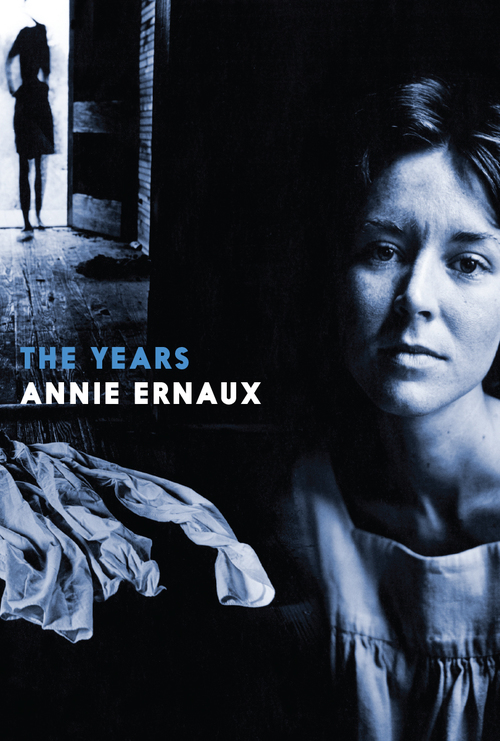 Annie Ernaux, tr. Alison L. Strayer, The Years (2017)
Annie Ernaux, tr. Alison L. Strayer, The Years (2017)
There ’ s a revolution happening in life sentence publish and the french novelist Annie Ernaux deserves far more credit than she ’ s received for showing how a astuteness of manner and tone can situate a life within the larger rivers of time. Ernaux was born in 1940 in the center of the France ’ s working class Normandy. Since that meter period, up until 2006, when this book ends, France has lived through the war, the pill, the get up of consumer culture and a whole blizzard of idea-fads, which she threads her life sentence through and around—a boat traveling down a current of past-ness. Along the way Ernaux became a populace person, a celebrated person even, in belittled circles, and this book comes to grip with the personnel casualty of singularity that entails. Mostly, though, to read The Years is to re-experience, as if afresh, what the past feels like. not equitable what it is made of, what rocks around which a times flow, but how it feels to be traveling upon a before. In an era when nostalgia is so quickly commodified—witness the 1970s—Ernaux ’ south attempt to forge a way of considering life as remarkable and collective is queerly moving, unfashionable, and dignified. –John Freeman, Executive Editor, Lit Hub
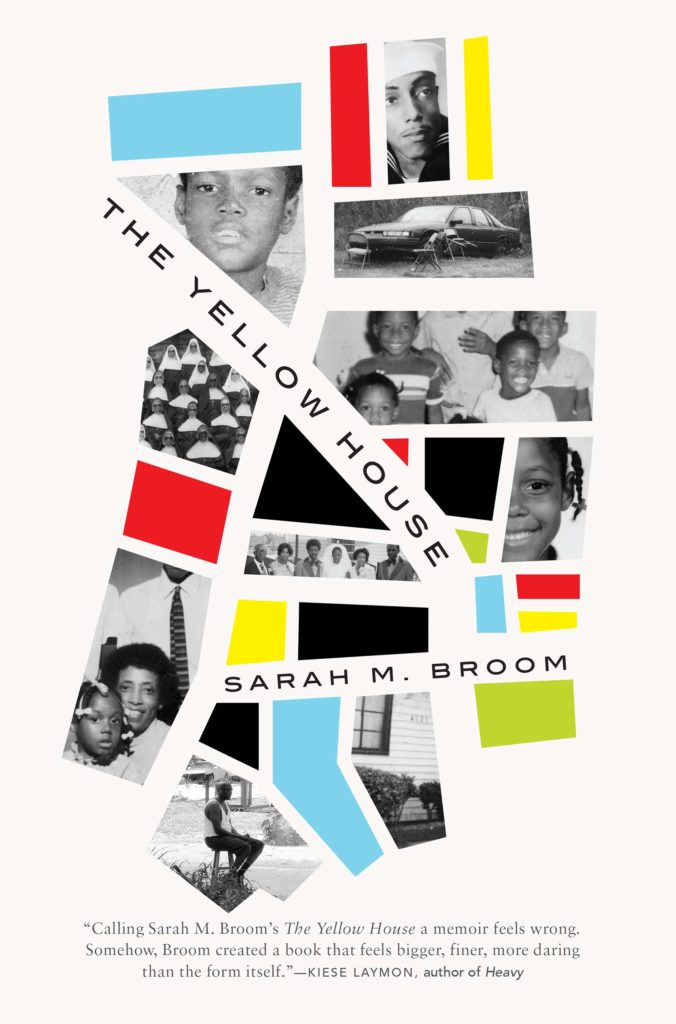
Sarah M. Broom, The Yellow House (2019)
Before I picked it up, Sarah Broom ’ s The Yellow House was intriguing to me precisely because it blends memoir with thus many other forms. In her revue of the books, Angela Flournoy describes it as “ region oral history, part urban history, part celebration of a bygone way of life. ” The oral history component is drawn from Broom ’ s interviews with her mother and her 12 siblings about their lives in New Orleans East, an area of the city once vaunted as “ a ‘ new frontier, ’ advanced for development, ” which by the clock time Broom was coming of age there had been largely abandoned by the city. Her brothers and mother tell their stories of Katrina, “ the Water, ” which Broom experienced from New York, in one of the most wrench sections of the koran. The hurricane destroys the nominal Yellow House and scatters the Broom kin across the country. Broom herself lives for some months in Burundi before returning to New Orleans to work as a speechwriter for the mayor, then rear to New York, then to New Orleans once more.
Read more: The Best Philosophy Books Of All Time
Broom is a headmaster of sentences, but she besides knows precisely when to pass over the floor. The result is a gorgeous medley of histories that is at once profoundly personal and fabulously varied. Home—both the physical and the intangible sorts—are at the center of the history. The question of who gets to have a home in America, in the face of huge income inequality, institutional racism, and climate deepen, is ever-present. In his review, Dwight Garner predicts that The Yellow House “ will come to be considered among the essential memoir of this vexing decade. ” I couldn ’ thymine agree more. –Jessie Gaynor, Social Media Editor
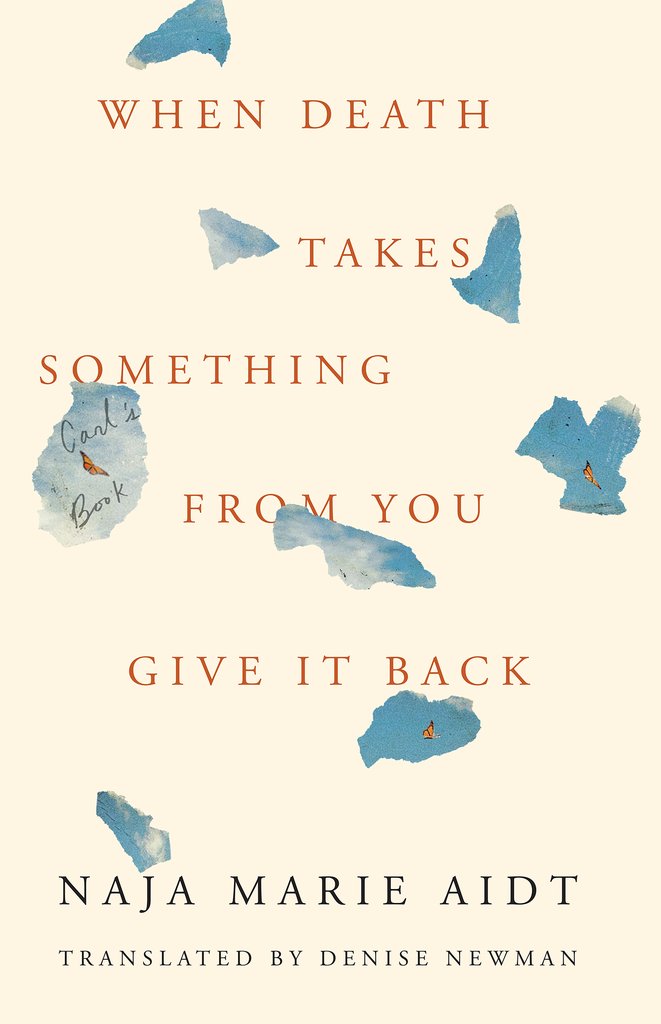 Naja Marie Aidt, tr. Denise Newman, When Death Takes Something From You Give It Back (2019)
Naja Marie Aidt, tr. Denise Newman, When Death Takes Something From You Give It Back (2019)
This remarkable memoir is easily one of the best of any kind published in the last decade. On a fundamental level, it paints a warm, intense portrait of danish writer Aidt ’ randomness son, a chef and searcher who died tragically in his early twenties when a home-made batch of hallucinogenics led to a atrocious accident. Drawing on the writer ’ s diaries in the aftermath, poets of lacuna like Anne Carson and Ingrid Christensen, and narrating the boy ’ sulfur life and breeding, it is besides a mighty formal assertion of the heartbreaking illegibility of loss, even as all one wants to do with the miss is keep them animated, award, somehow. Watching Aidt pull it off is akin to watching Philippe Petit walk a tight-rope between the Twin Towers. There ’ s such dexterity and gladden even occupation by line in her prose. Yet the gap over which Aidt strings her lines is terrifying. It ’ s not just a grief this bible narrates, it ’ sulfur how to rethread time ’ sulfur projector when an accident has caused a sudden pluck in the reel. In Denmark, Aidt has hanker been read as an necessity poet, and her fiction, Baboon, is taught in high schools. This book secures her function in a identical small collection of writers who have taken the form of a memoir and revealed how a lot opinion and loss live in the same ventricle of the heart ’ s true accounts. –John Freeman, Executive Editor, Lit Hub
***
Dissenting Opinions
The postdate books were barely scantily nudged out of the peak ten, but we ( or at least one of us ) couldn ’ thyroxine let them pass without remark .
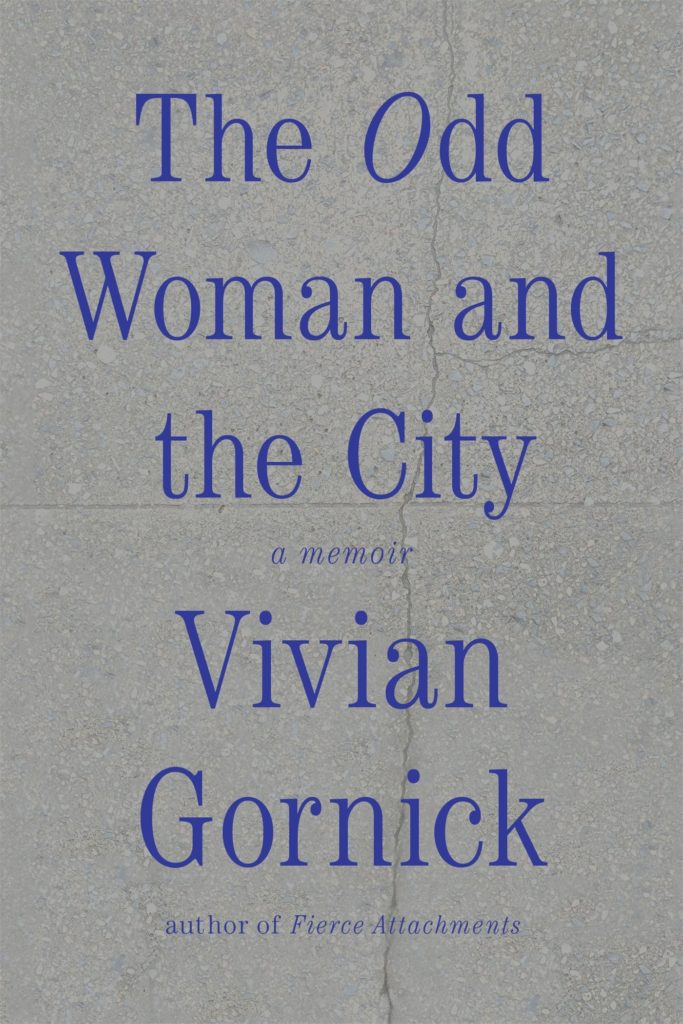 Vivian Gornick, The Odd Woman and the City (2015)
Vivian Gornick, The Odd Woman and the City (2015)
In an essay for the Village Voice in 1973, Vivian Gornick described her date with contemporary feminist thought as a work of redefining what it meant to move through life as a woman. “ It is a journey of impossible pain and aloneness, this travel, a battle all the way, one in which the lapp inch of emotional flat coat must be fought for over and over again, alone and without allies, the only soldier in the united states army the struggling self, ” she wrote. “ But on the other slope lies exemption : self-possession. ” The Odd Woman and the City, her memoir published in 2015, shows separate of Gornick ’ s long road of introspection and is filled with the aggressively self-conscious observations and insights that have marked her as one of our most significant memoir writers. The koran showcases Gornick as an incredible documentarian of the emotional worlds that collide throughout the run of a day in New York City ; her book focuses in detail on her friendship with a serviceman named Leonard, but besides on all the early little interactions that fill city life and all the small letter, passing ways in which humans seek connection with one another. Describing these with clearness and compassion is one of Gornick ’ s biggest strengths ; this memoir is a exemplar of self-reflection and a mirror for those of us that have not yet amply arrived in ourselves, but are on the way. –Corinne Segal, Senior Editor
Oliver Sacks, On the Move (2015)
There are many records of Oliver Sacks ’ mho life and influence, but none marries the two subjects quite so powerfully as his memoir, On the Move, a ledger published equitable a few short months before his end in 2015. Sacks was one of the century ’ s great intellects, a mind alive to experience, nuance, the unknown, experiment, and, above all, communication. few scientists have always been so gifted in the art of storytelling. Over the years, Sacks expanded our notions of the world, our bodies, and our minds. Those were the stories of his professional work. But the report of his own life was just as compelling. In On the Move, he grapples with his past, his sex, his literary craft, his aesculapian achievements, his failures, and his many, many experiments of all stripes and colors. We may come to a bible like this one for the medicine tales, but we stay for the stories of cross-country motorbike rides, self-administered experiments with potent drugs, struggles with addiction, bodily transformations, and affairs of the kernel. Throughout it all, Sacks maintains the acute, at times wrenching familiarity of his prose. In a perfect encapsulation of the storytelling overture that made him legendary, Sacks writes, “ All sorts of generalizations are made possible by dealing with populations, but one needs the concrete, the particular, the personal too. ” With those particulars, those personal items, Sacks made a kind of magic. On the Move is that rare memoir written by an author whose life experiences and ideas are the match for his literary talents. He was the arrant narrator. His stories had asperity and power, and they served to make the universe seem like larger seat, and always more curious. –Dwyer Murphy, CrimeReads Managing Editor
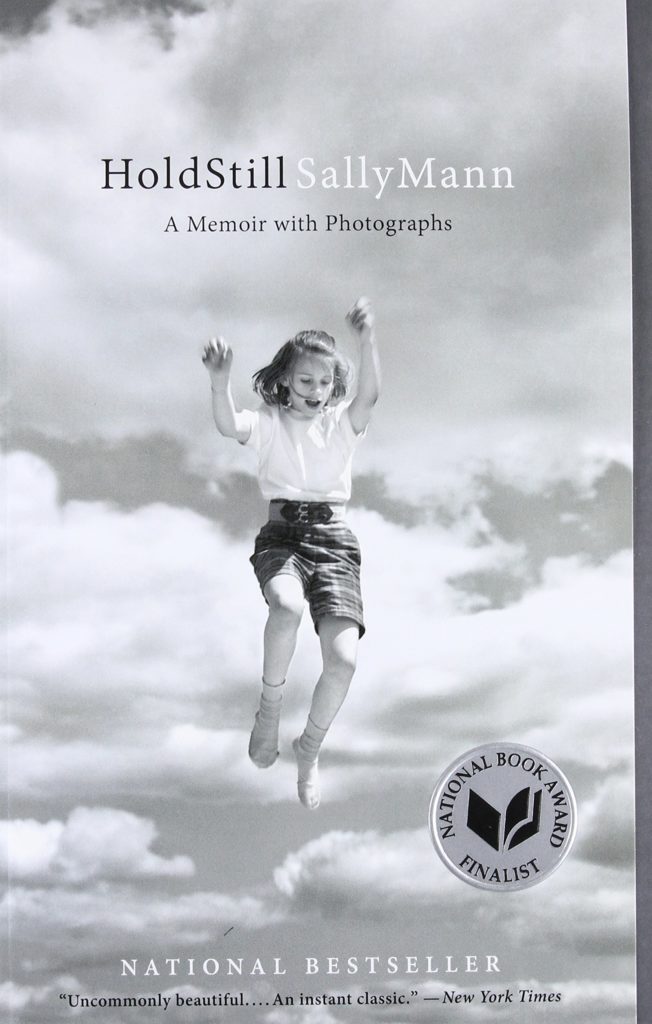 Sally Mann, Hold Still (2015)
Sally Mann, Hold Still (2015)
I remember the first base time I saw a Sally Mann portrait in substantial life—I about walked by, but something caught me and held me there, for a lot longer than I expected. The eyes, the airs, the vulnerability, the cobwebby Southern trees—I distillery can ’ thymine put my finger on it, can ’ metric ton explain, a phenomenon that for me is the grade of artistic brilliance .
In this dainty memoir, the widely lauded and highly controversial Mann unpacks her syndicate ’ sulfur history in her beloved Virginia, telling her own tales arsenic well as shaking out old boxes of photograph and letters that point towards “ fraudulence and scandal, alcohol, domestic abuse, car crashes, bogeymen, clandestine affairs, dearly loved and disputed class land. .. racial complications, huge sums of money made and lost, the rejoinder of the prodigal son, and possibly even bally murder. ” All that is about a fun as it sounds, but Hold still stands out most of all for being a truthful photographer ’ south memoir : in weaving her photograph throughout, Mann both showcases her art and uses it to illustrate her story—and sometimes her point. She responds to her critics with a classify of bewilder permissiveness, and shows shots taken fractions of seconds apart, in which her children ’ randomness faces separate from hard-edged vamping into cockamamie smiles. But she besides grapples with the fear that they might, in some sense, be right—that she has put her children in danger by making them her subjects. It ’ sulfur complicated, and ultimately unsolved, which feels like truth. Read an excerpt here. –Emily Temple, Senior Editor
 J. Drew Lanham, The Home Place: Memoirs of a Colored Man’s Love Affair with Nature (2017)
J. Drew Lanham, The Home Place: Memoirs of a Colored Man’s Love Affair with Nature (2017)
“ I am, in the deepest common sense, colored, ” writes naturalist and wildlife biologist J. Drew Lanham, in a memoir whose consummate opening sections bring to mind Jean Toomer ’ randomness descriptions of Georgia in Cane ( 1923 ) .The Home Place is on one level about lives not easily categorized, a man who watches the people and landscapes of his childhood switch and vanish adenine much as he watches the birds he so dearly prizes. Lanham is american samoa much a poet as an academic. He writes not only in court to the family that made him who he is, but besides to decouple nature and environmental literature from academia, which he accuses of alienating readers who might otherwise find a way in. The “ in-between position ” that the title refers to is a 200-acre inholding in the bantam county of Edgefield, South Carolina, where Lanham grows up with his parents, siblings and grandma. Lanham competently writes with the preciseness of an agriculturist ; his prose is devious, humorous, and much understate : “ There were three or four old crape myrtles in the yard that erupted in purple and white blooms in April and May. little copses of lemon-yellow daffodils and nodding snowdrops preceded the crepe myrtles in the new affectionateness of march. ” Or : “ [ R ] oving gangs of noisy blue jays conducted dawn raids to gather a share of nuts. ” Though tarriance in this kind of descriptive prose is the bible ’ south greatest pleasure, Lanham besides speaks to the difficulties he ’ mho encountered throughout his career. He ’ s mindful that, unfortunately, a black man in his profession is relatively rare, and Lanham ’ south individual experiences in and beyond the Home Place are constantly circumscribed by this cognition. Coincidentally, The Home Place was published just months before the election of a president whose administration would roll back key legislation mean to protect endangered species. Lanham took a more placid border on than the post-2016 “ judgment day ” mode of ecological write, though we must now wonder what Lanham might say in an presentation if the ledger always gets another printing. –Aaron Robertson, Assistant Editor
 Nora Krug, Belonging (2018)
Nora Krug, Belonging (2018)
Reading Nora Krug ’ south Belonging is like watching a mind unfold in front of you. It ’ randomness classified as a graphic memoir ( and it won the 2019 National Book Critic Circle Award for Autobiography ! ), but it feels like a scrapbook. ( You can see what I mean here, in this excerpt on homesickness and heimat, or “ the place that a person is born into. ” ) Belonging is Nora Krug ’ mho honest try to reckon with her german inheritance. Born decades after the Holocaust but surrounded by a familial secrecy about it, she boldly interrogates her family ’ second function in this severe history. Belonging doesn ’ metric ton just tell Nora Krug ’ s story. Yes, there are plenty of her own handwritten notes and beautiful illustrations, but she besides cobbles together class photograph and letters to tell this report through the generations. Belonging reads like a home television and a history casebook rolled into one. On one page, you ’ ll have an anecdote about mushroom-foraging with her family. On another, you ’ ll trace the history of a particular kind of german bind, which her mother used to patch up her six-year-old knee after a skate accident. But on the adjacent, she ’ ll include some of her uncle ’ randomness journal, complete with anti-semitic grandiosity and his drawings of swastika. ( random and hodge-podge as it may sound, trust me : the curation feels organic. These things are connected, is what Nora Krug seems to be saying. ) There is something unbelievably generous about the way she offers these bits of history to us. The report international relations and security network ’ thymine brought to us as an olive branch or a request for forgiveness for her family. It ’ s an open-ended question. This is possibly why the graphic memoir/collage metier is the perfect one in which to tell this fib ; there is no pose or justification or attack at explanation. She can leave us with an effigy and let us sit with the complicate discomfort. We join her in the midst of her reckoning. –Katie Yee, Book Marks Assistant Editor
Carmen Maria Machado, In the Dream House (2019)
It feels allow that describing Carmen Maria Machado ’ sulfur In the Dream House—comprised of the tellings and retellings of Machado ’ s relationship with an abusive ex-girlfriend—falls to the three of us who loved this memoir so a lot that we all had to have a say. This is a story with many forms, all centered on the Dream House : a real place where Machado and her ex-girlfriend live, but besides a series of genial fortifications forged through emotional misuse, physical violence, gaslighting, and intuition. Machado calls on a series of narrative traditions in recounting this narrative, one for which there is little to no existing narrative common law, since abusive queer relationships have so rarely been addressed in democratic culture ; the consequence is a dizzy, massive accomplishment. then many of us have our own versions of this history, and reading through hers feels intensely personal and potently approving, the equivalent of a friend looking you in the eye and saying, over and over, you ’ re not crazy. I needed this book ; I think a lot of us do. –Corinne Segal, Senior Editor
The commitment page to In the Dream House goes : “ If you need this koran, it is for you. ” Carmen Maria Machado ’ s memoir does something I ’ ve never seen done before, which is to examine an abusive fagot relationship from many different angles, to hold it in many unlike lights. She uses footnotes to call upon tropes in mythology and taboo in literature. She references fagot theory. It ’ s all in an attack to situate the report in a different context, to find a way to tell it that can help us make sense of what ’ s happening. In the Dream House is a dizzy, bare-assed, and profoundly personal floor and with her experimental structure, she is casting lines out, trying to find ( and helping others find ) the structure that holds. –Katie Yee, Book Marks Assistant Editor
I have never ahead read a memoir that reads like a thriller. Machado deconstructs the memories of her abusive relationship and filters them through literary tropes in order to lay out the signs, rede, organize and in doing so repeatedly, in what becomes a model that never satisfies, she and the reader hail to the understand that there will never be a one of narrative, nor any traditional resolving power to a fib of trauma. Machado ’ s run through the Dream House strikes me as the inverse of the madwoman narrative—rather than a down spiral, the recognition of danger calls upon the protagonist ’ second inner potency, while the continual cope with what is true and what isn ’ t lone sharpens her dissolve to save herself. In the Dream House is a Heroine ’ s Journey and it is stunning in both its invention of a newly memoir kind and its emotional rapport. To echo Corinne and Katie, this is a book you need to read. –Eleni Theodoropoulos, Editorial Fellow
 Kier-la Janisse, House of Psychotic Women: A Personal Topography of Female Neurosis in Horror and Exploitation Films (2012)
Kier-la Janisse, House of Psychotic Women: A Personal Topography of Female Neurosis in Horror and Exploitation Films (2012)
I ’ ve always been of the mind that the best way to get to know person is not through their know then much as their taste, a little-explored topic in the wide universe of recorded lives—until immediately .
In her bright and bizarre memoir, Kier-la Janisse reinvents film criticism as memoir, and tells the floor of her biography through the horror and exploitation films she enjoyed growing up and which by and by became her life sentence ’ second heat. anecdotic musings and harrowing life accounts mix together with astute criticism incorporating a quarter-century of think on repugnance film ; the chapter on films of adolescent rebellion goes together with Janisse ’ s account of her baby delinquency, while Janisse ’ s relationship with her founder, constantly fraught, leads into discussions of kin, gender and sex as represented by exploitation cinema. Janisse international relations and security network ’ deoxythymidine monophosphate making the encase that these films are valuable works of art, so much as windows into the modern mind, and occasionally ( as in the event of rape and retaliation cinema ) a narrative shape to be reclaimed by feminists despite its master lubricious captive. House of Psychotic Women is what I hope all works of crop up culture criticism to be in the future— erudite, personal, intense, mind-bending, and refusing to draw a wrinkle between literary deserve and personal taste. Plus, the design is amazing ! –Molly Odintz, CrimeReads Associate Editor
***
Honorable Mentions
A excerpt of other books that we seriously considered for both lists—just to be extra about it ( and because decisions are hard ).
Read more: The Cruel Prince (The Folk of the Air, #1)
Christopher Hitchens, Hitch-22 ( 2010 ) · Binyavanga Wainaina, One Day I Will Write About This seat ( 2011 ) · Jeanette Winterson, Why Be felicitous When You Could Be Normal ? ( 2011 ) · Emmanuel Carrère, tr. Linda Coverdale, Lives other Than My Own ( 2011 ) · Gabrielle Hamilton, Blood, Bones and Butter : The Inadvertent Education of a reluctant Chef ( 2011 ) · Meghan O ’ Rourke, The Long Goodbye ( 2011 ) · Tony Judt, The Memory Chalet ( 2011 ) · Lidia Yuknavitch, The Chronology of Water ( 2011 ) · Joan Didion, Blue Nights ( 2011 ) · Joshua Cody, [ Sic ] : A Memoir ( 2011 ) · Mira Bartók, The Memory Palace ( 2011 ) · Alison Bechdel, Are You My mother ? ( 2012 ) · Anthony Shadid, House of Stone ( 2012 ) · Héctor Abad, tr. Anne McLean and Rosalind Harvey, Oblivion ( 2012 ) · Leanne Shapton, Swimming Studies ( 2012 ) · Cheryl Strayed, Wild ( 2012 ) · Edna O ’ Brien, Country Girl ( 2013 ) · Malala Yousafzai and Christina Lamb, I Am Malala ( 2013 ) · Liao Yiwu, tr. Wenguang Huang, For a Song and a Hundred Songs ( 2013 ) · Sonali Deraniyagala, Wave ( 2013 ) · Amy Wilentz, Farewell, Fred Voodoo ( 2013 ) · Roz Chast, Can ’ t We Talk About Something More pleasant ? ( 2014 ) · Viv Albertine, Clothes, Clothes, Clothes. Music, Music, Music. Boys, Boys, Boys. ( 2014 ) · Bryan Stevenson, Just Mercy ( 2014 ) · Rebecca Mead, My Life in Middlemarch ( 2014 ) · Heidi Julavits, The Folded Clock ( 2015 ) · Tracy K. Smith, Ordinary Light ( 2015 ) · Patrick Modiano, tr. Mark Polizzotti, Pedigree ( 2015 ) · Lacey Johnson, The other Side ( 2015 ) · Mohamedou Ould Slahi, erectile dysfunction. Larry Siems, Guantanamo Diary ( 2015 ) · Jenny Diski, In Gratitude ( 2016 ) · Scholastique Mukasonga, tr. Jordan Stump, Cockroaches ( 2016 ) · Hisham Matar, The Return ( 2016 ) · Hope Jahren, Lab Girl ( 2016 ) · Patricia Lockwood, Priestdaddy ( 2017 ) · Daniel Mendelsohn, An Odyssey ( 2017 ) · Xiaolu Guo, Nine Continents ( 2017 ) · Annie Ernaux, tr. Alison L. Strayer, The Years ( 2017 ) · Kiese Laymon, Heavy ( 2018 ) · Lisa Brennan-Jobs, Small Fry ( 2018 ) · Sarah Smarsh, Heartland ( 2018 ) · Francisco Cantú, The Line Becomes a River ( 2018 ) · Leslie Jamison, The Recovering ( 2018 ) · Terese Marie Mailhot, Heart Berries ( 2018 ) · T Kira Madden, Long Live the Tribe of Fatherless Girls ( 2019 ) .
![]()
Emily Temple
Emily Temple is the managing editor at Lit Hub. Her first novel, The Lightness, was published by William Morrow/HarperCollins in June 2020.
https://www.emilytemple.net/
Emily Temple is the managing editor at Lit Hub. Her first fresh, The Lightness, was published by William Morrow/HarperCollins in June 2020. You can buy it here .



